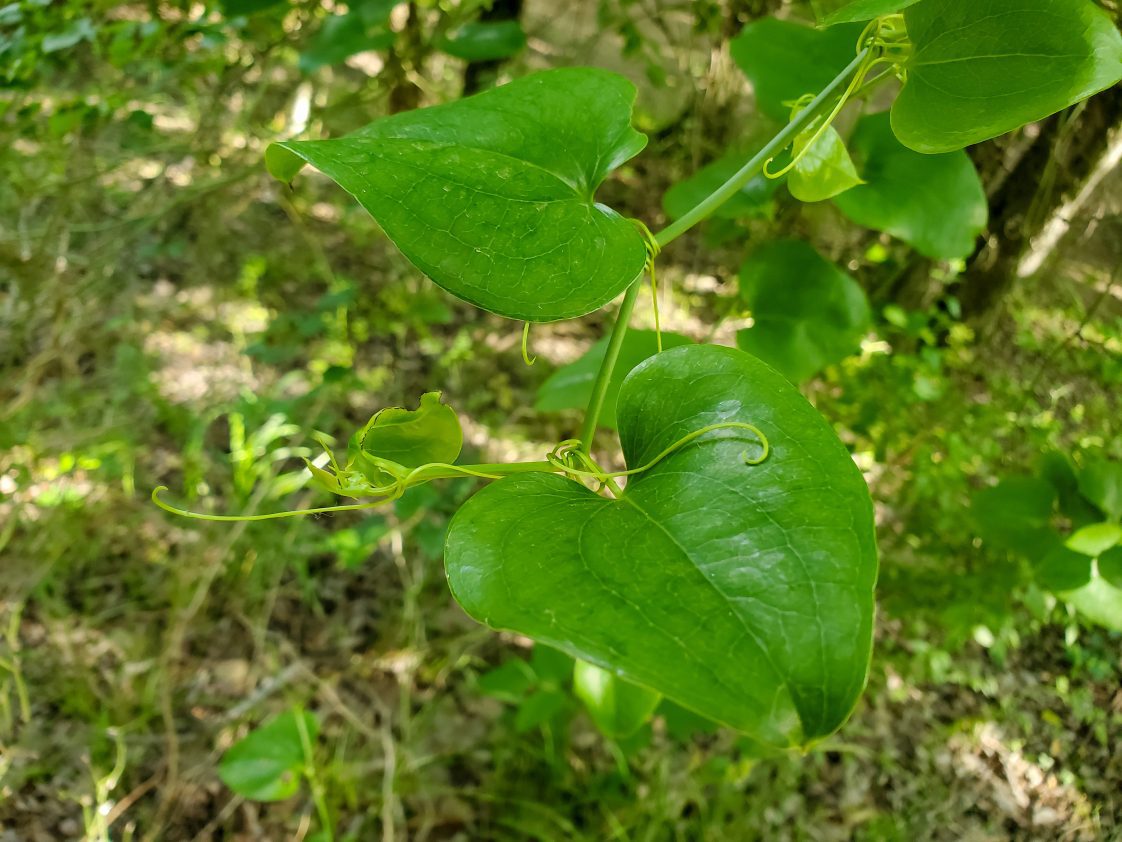Lawn & Garden

AUBURN UNIVERSITY, Ala. – One of the peskiest—and most pointy—vines calls Alabama home. Greenbrier has the potential to take over a landscape and can become a thorn in your side as well as in your landscape. To mitigate the spread of this species, it is important to take steps outlined by professionals with the Alabama Cooperative Extension System.
Greenbrier
Known scientifically as smilax spp., greenbrier is known for its sharp thorns and its difficulty to control. This perennial plant grows with a viny growth habit that promotes underground growth in a tuber-like system. Greenbrier is a very resilient plant that thrives in a wide range of environmental conditions.
According to Alabama Extension Commercial Horticulture Regional Agent David Lawrence, greenbrier does not only spread with root systems.
“Female greenbrier plants produce berries that are consumed by birds and other wildlife which aids in spreading of this species,” Lawrence said. “Seeds are dispersed throughout the landscape, then germinate once environmental conditions are optimal.”
Greenbrier can also remain healthy in low-light conditions. This adaptation to sunlight exposure allows the species to grow in and around bushes, shrubs and other large plants.
Control
If greenbrier establishes in a landscape, it can become nearly impossible to physically remove because of thick tuberous roots that run in all directions. The most permanent method control is to dig up the vine and its root system. This can be laborious and should only be an option early in the greenbrier’s life cycle.
“Hand removal of the vine and as much of the root system as possible is the most effective form of control, however, new vegetative growth can emerge from any root material that remains in the soil,” Lawrence said.
In the right situation, chemical application can effectively treat greenbrier. Primarily, the most effective herbicides are non-selective, meaning that the chemical will apply the same treatment to all species it contacts. Therefore, applicators should be careful when applying to make sure they don’t harm desirable vegetation.
“Chemical control is best achieved with multiple applications made during the spring when new leaves begin to emerge,” Lawrence said.
For established greenbrier, snipping a vine as it appears from the ground and immediately applying a product containing a high concentration of glyphosate can help suppress the weed.
Every Brier Has its Thorn
Just like every night has its dawn, every brier has its thorn. To keep this pointy species at bay, mitigate the takeover of greenbrier in your landscape. Be sure to treat this weed at the appropriate time of year and with the appropriate method to ensure the best results.
Discover more expertise and find resources from Alabama Extension by contacting your local Extension office. Visit www.aces.edu to learn more about other Alabama weed species.

